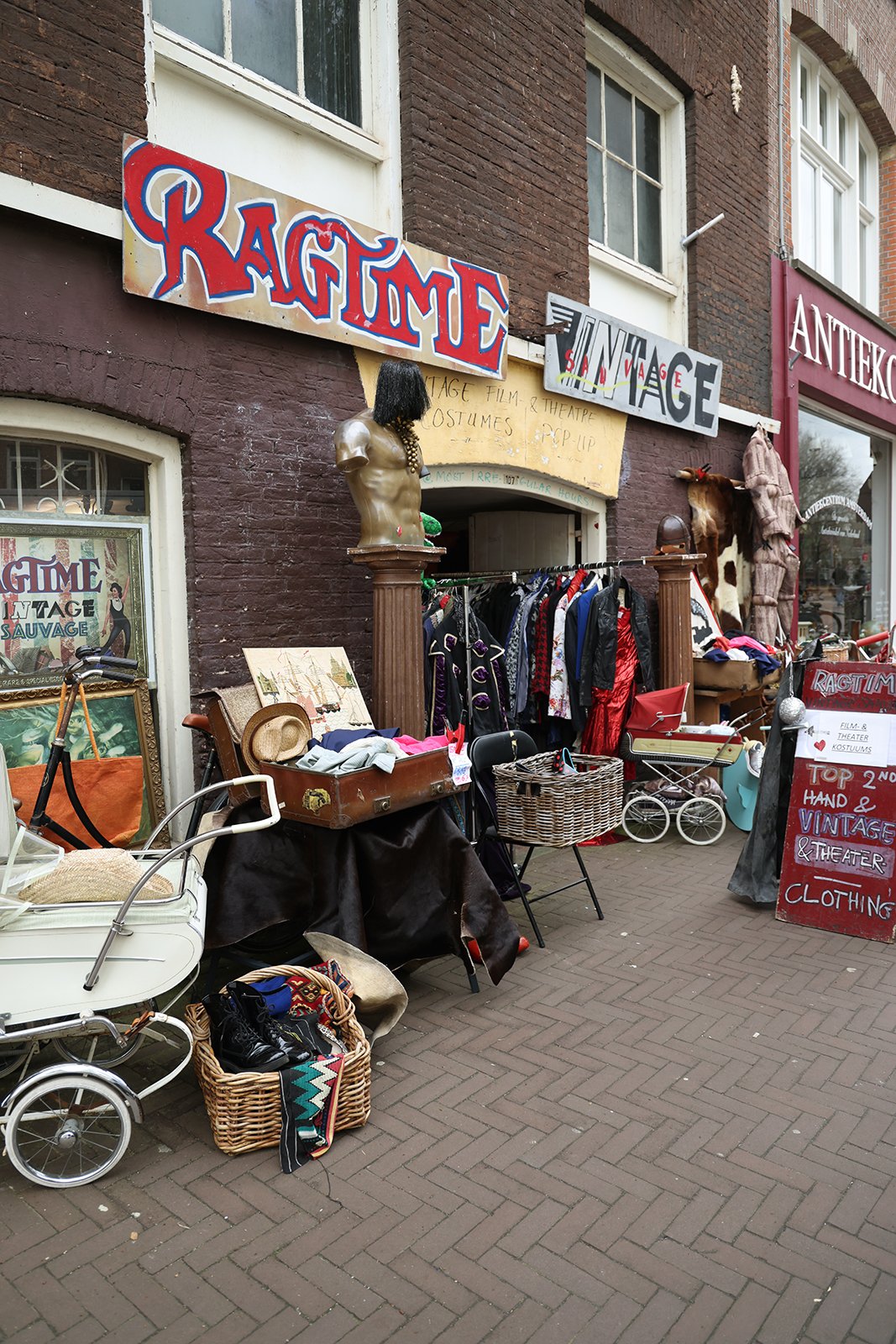Amsterdam, The Iconic Watery Capitol of the Netherlands
If you are exploring Amsterdam for the first time, you may be in for a bit of a jolt. Amsterdam’s historic center is riddled with swarms of bicyclists whizzing through the canal-lined streets like a million attack hornets weaving around perpetually pausing tourists and clumps of bros drawn by the city’s infamous red light district.
This particular stew of pedestrian, auto, and bicycle traffic all inhabiting the same incredibly narrow thoroughfares makes for more of an unpleasant experience then one would expect from a city so popularly romanticized.
All of this to say it really helps to have a plan and specifically head to the good areas, this is too hectic a city to actually enjoy meandering for long.
Unless you came here particularly to lay waste to your senses (in which case, enjoy but this is not the introduction to Amsterdam you’re looking for), our recommendation is to spend a little time exploring the center to satisfy your curiosity and then, before the stench of second-day drunks and prolific headshops (which the Dutch call coffee shops) overwhelms you, make your way to the more relaxed and enjoyable neighborhoods found only a brisk walk away if you know where you’re headed.
The reason Amsterdam locals ride bikes is not to protect the environment, contrary to what you may have heard. It is because there is NO other way to efficiently navigate the city. The tiny streets mean that if a car stops to let out passengers or to park or if it needs to back up or load up, there is no way around and traffic immediately backs up down the block, and on. The city is one continuous knot of perpetual traffic snarls. Taking a bike is much faster because people can whip around obstacles, weave between pedestrians, and ignore traffic signals at their discretion. Locals each own more than one bike, a nice bike for going to work or events and a junker bike for going out, one that you won’t cry over if it’s stolen or crashed. If your bike is stolen which is a common occurrence, you simply buy another junker bike from people who sell them on the street (this bike was liberated from another person) and the cycle continues for the bike, until it winds up in a canal.
Trendy Jordaan District in the canal streets is the “hipster” hood of the city.
The Jordaan neighborhood is chock-full of vintage shops, art galleries, small museums, bookstores, and countless cafes. Nearby are the 9 streets, a grid of 3 by 3 streets lined with both boutiques and big retailers.
In Jordaan, you can visit the Anne Frank House, as well as the Anne Frank Museum. You will need to book these tickets in advance of your trip, they go on sale six weeks in advance, every Tuesday at 10 am (local time). They sell out rapidly so be on standby to purchase them with your exact dates in mind. The site is here.
Where to stay in Jordaan:
Right on the canal in locally owned, luxury guesthouse Villa 360.
The park-filled Museum District is a more relaxed and LEISURELY part of Amsterdam while still CONVENIENTLY ADJACENT to the bustling canal streets.
The famous Rijksmuseum is central to the district, and nearby the world’s luxury brands occupy upscale PC Hooftstraat and adjacent streets, making this the city’s high-end shopping destination.
Where to stay in The Museum District:
Among Vondelpark’s tree lined townhouses at Park Mansion.
Amsterdam is a city with a very unique history, earning well its seat among the capitals of Europe.
Some fascinating details from the past shaped the city and gave it its particular style and personality. One of the most well-known and defining factors is the Dutch determination to take back land from the sea, using canals to moderate water levels and windmills to power pumps to drain the land.
The city’s quintessential aesthetic began to evolve when, long ago, the city levied a property tax to upkeep city maintenance. The amount owed in tax each year would be determined by measuring the street-facing width of your house’s facade. Only the wealthy could afford to build a wide house. Most of the citi’s inhabitants went to lengths to keep their frontage as small as possible, even if the home opened up more in the back. This resulted in the classically narrow row houses iconic to the city. Amsterdam’s narrowest row house is barely over 2 meters wide.
Houses were commonly so narrow that it was impossible to bring furniture to the upper floors. To solve for this issue, a beam protrudes from the gabbles of most properties, equipped with hooks and pulleys to hoist large objects to the upper windows. A further architectural oddity that resulted can be seen in what appear to be leaning structures. These are not slowly sinking on soggy foundations into the canal. Homes were often purposefully built with an outward slant to the facade so that when items were hoisted up they wouldn't scrape against the front of the building.
Something else you will see everywhere in Amsterdam is a triple XXX symbol. From manhole covers and T-shirts to bridge railings and keychains, these three XXX’s are a symbol of the city and even dress Amsterdam’s flag. There seem to be several origin tales that explain the backstory for this motif. Our guide told us the three XXXs mark the crippling disasters that destroyed the city; Flood, Fire, and Plague, each, in turn, causing such widespread death and devastation that no one was untouched. The strength to rise again from tremendous hardship and loss is remembered in the city’s culture to this day.
Amsterdam was once the seat of the Dutch Empire and home to some of the largest shipping houses in the world. World exploration, European colonization, and finally the Industrial Revolution saw passenger liners traversing the oceans and Amsterdam was front and center of the shipping industry.
Where to stay to experience Amsterdam’s rich History;
Inside magnificent empire era shipping house Grand Hotel Amrath.
For local insight and an UNPARALLELED view of the city from its iconic waterways, you must book a canal tour during your stay in Amsterdam.
Our recommendation; Pure Boats. It’s a smaller vessel than some of the tourist barges, making for a fun and personal experience complete with drinks and possibly a bite depending on what option you select when booking.
















